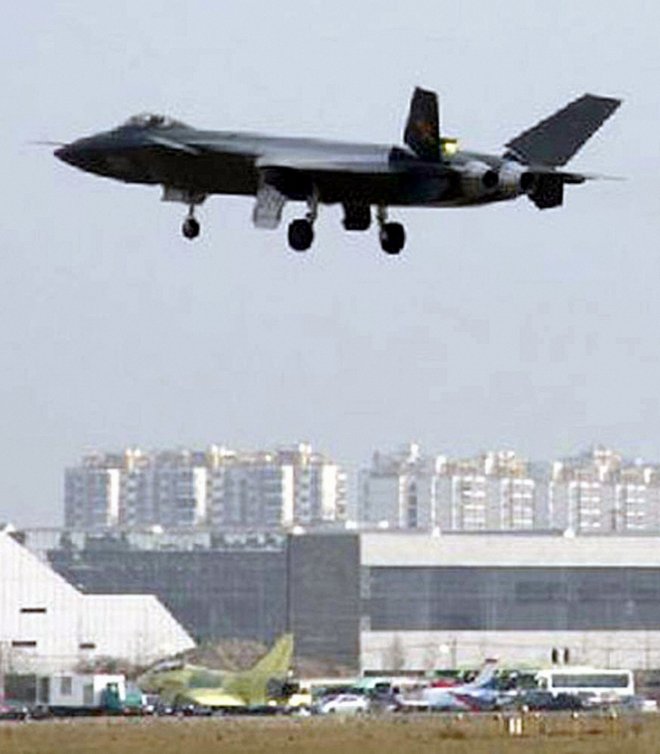
China's latest J-20 stealth fighter, long touted as the answer to the US F-22 Raptor and even the F-35, was unveiled at the China International Aviation and Aerospace Exhibition at Zhuhai, Guangdong , on Tuesday.
The long-range, radar-evading J-20 fighter, which is seen as a key element in China's increasing arsenal, was first tested in air in 2011 but only bloggers had been given a preview of the plane until now.
While some hail the J-20 as the mark of China's arrival as a major air power, others have debunked its significance.
Here are the key points:
1. The J-20 fighter was hailed as Beijing's answer to the Lockheed Martin-made US F-22 stealth combat fighter, mainly because of the design similarities. Analysts who were offered restricted access to the prototype at various stages drew comparisons with the US Lockheed Martin-made fighter jet.
2. However, it's too early to say what exactly the jet's defensive and radar-evading capabilities are at this point. Many military analysts have said the fighter would bring the Chinese Air Force on an even keel with the world's best. The stealth fighter is a vast improvement on the J-31 China unveiled in 2014. China says cutting edge research is still going on.
3. The long-held belief has been that J-20, when it becomes operations ready, will change the power balance in the East and South China Seas where the US and its allies dominate air combat. China is more ambitious in its foreign policy now and wants its Air Force to move several notches higher in capability.
4. The US is deploying its latest F-35 aircraft to a base in Japan, clearly posing a challenge to China's air superiority ambitions in the region. Japan's self defence forces have already signed up to buy the F-35 fighter and the first delivery may take places early next year.
5. US Air Force General David Goldfein said the J-20 cannot be compared with the US F-35. According to him, in defensive capabilities, J-20 is on par with the fighters US aircraft used in the 80s. "When I hear about F-35 vs. J-20, it's almost an irrelevant comparison ... Goldfein told BreakingDefense.com. in August.
6. With J-20 inducted into the air force, China will claim a rightful place in the air warfare elite class as the fighter will sport all advanced capabilities of a fifth generation fighter jet --radar avoidance, infrared visibility, supersonic cruise capability and more.
7. However, to add some chronological perspective, the US deployed its faith generation fighter F-22 in 2005. Since then the US and its Nato allies have incorporated these fighters into their militaries.
8. Defence market analysts say the demand for the fifth generation strike aircraft is actually on the wane in recent years. So it remains to be seen how China far will be able to capitalize on the J-20. According to IHS Jane's, initial projections showed as many as 5,000 fifth generating fighters would be purchased by various countries but that number looked over inflated.
9. The US itself lowered the intake of F-35 aircraft to a few hundreds from an initial projection of more than 3,000 over factors ranging from cost escalation to production related controversies.
10. For China, finding the market for its J-20 is going to be a daunting task. The relevant factors here are that the number of countries that consider high-end penetrative strike power as the key to their air defence capability is a limited - and almost static. Secondly to own and operate a fleet of fifth generation fighter aircraft is still a very costly enterprise for many countries.









